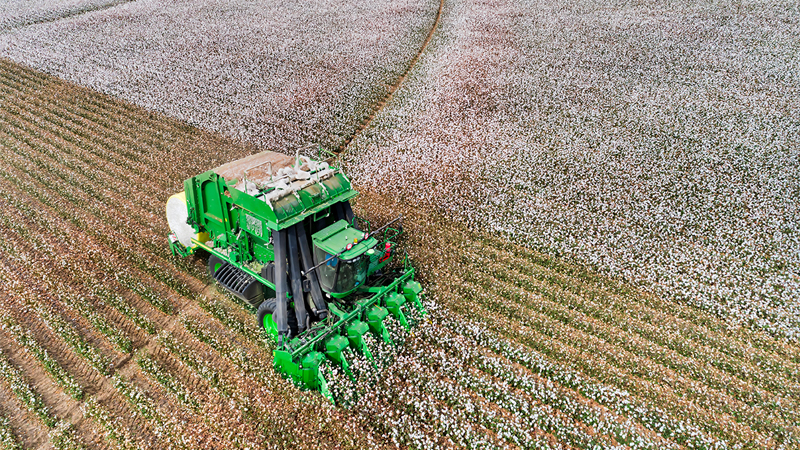The Past, Present, Future Of Chinese ELS Cotton
Extra-long staple (ELS) cotton saw a significant increase in production in China in the past two growing seasons, but this year those figures are expected to decline considerably. China’s competitiveness in the ELS market has, in part, been due to technology improvements, but is also based on their commitment to a new standards system. ELS cotton fibers are generally stronger and finer than Upland cotton fibers, and although there are clear genetic differences between the two species, the differences have often been blurred in the past by disparate cotton classification techniques in different producing countries.
Dr. John Cheh, Vice Chairman and CEO, Esquel Group in Hong Kong, attended the American Cotton Shippers Association Annual Convention in May and presented information on the alignment of China’s inspection standard with international practices. According to Cheh, this facilitates cotton imports.
“In 2003, the Chinese government approved Cotton Quality Inspection Reform Program, and the new standard for cotton inspection was issued on September 1, 2007,” he said. “The cotton processing and testing capacity under the new standard has reached 4.5 metric tons, accounting for 60% of total output in 2007/08.”
Most ELS cotton is grown in the Xinjiang region of China, where cotton planting has steadily increased in the past seasons. Other areas of farmland that have been home to cotton acreage in the past, specifically the Yangtze River Region and Huang He Region, will most likely be converted to farm other agricultural crops, Cheh reports.
Consumption of ELS cotton in China has experienced growth, as well. Due to the huge investments made in up scaling capacities, the country is now consuming more ELS cotton than before, according to industry reports. ELS cotton consumption surged and Chinese consumption of U.S. Pima and Egyptian ELS varieties grew more than 139% from the 2003/04 season to the 2006/07 season, according to a Cotton International World Report. In fact, China became the largest buyer of Pima cotton in the 2005/06 year.
Predicting the Future
Cheh discussed recent and current ELS supply and demand in China, saying, “China ELS cotton price was suppressed by high production and stock level in the last two years. I expect to see rising price pressure in the coming season as Xinjiang ELS planting area is reduced.”
Recent data does suggest that ELS plantings in Xinjiang, China, are down about 50 percent for the 2008/09 season. A still unknown portion of ELS cotton acreage appears to be switching to Upland cotton or other crops due to very weak prices that have prevailed for ELS seed cotton and lint. Exact planting intention levels are not yet known, but it is clear that the Construction Corps and individual farmers have switched more acreage into growing Upland cotton.
Additionally, there is still a high carryover inventory of about 80,000 tons of ELS cotton from past years. Due to the anticipated decline in ELS production, most of this stock has now been purchased by Chinese mills. There is a general expectation that ELS prices will go up by between 10-20% in the coming season, which will most likely mean a return to more ELS acreage in the 2009/10 planting season.
Caption:
China’s Top Three Farming Regions
Source: ICAC; Esquel internal research
Caption:
China’s ELS Cotton Supply and Demand
Source: Esquel
Caption:
Cotton Outlook by Province
Source: Esquel internal research









